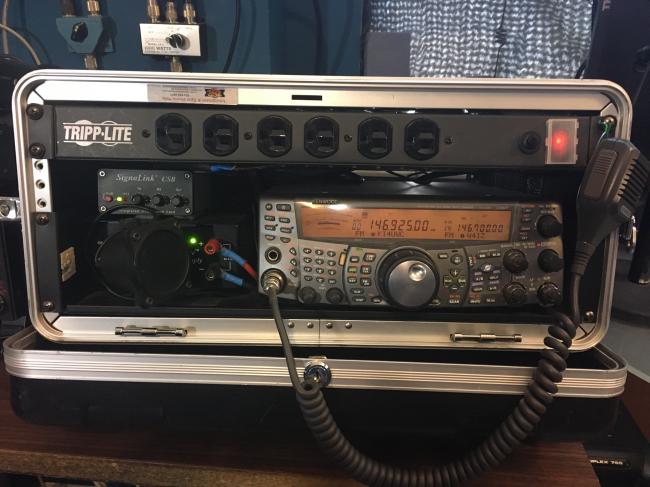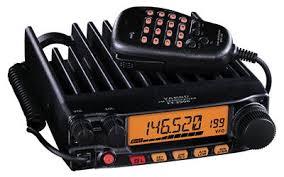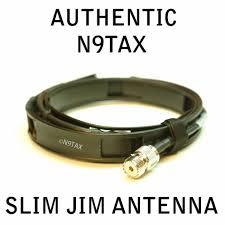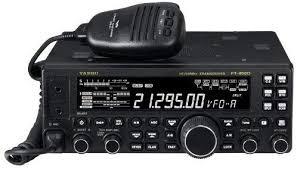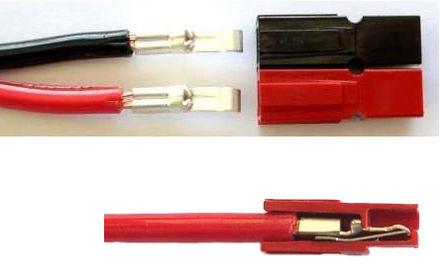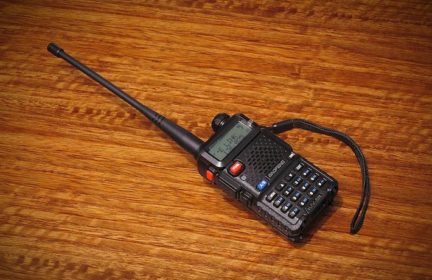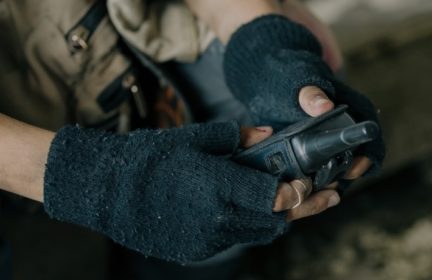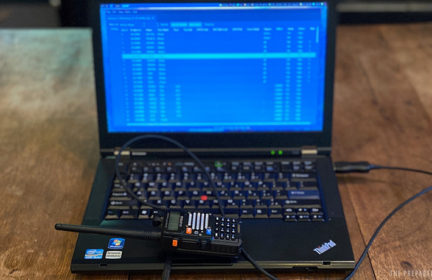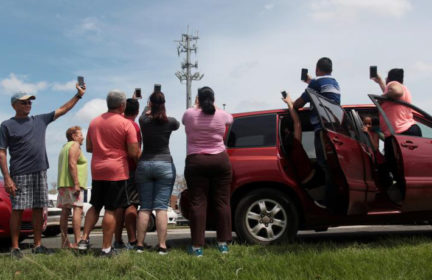Ham radio recommendations?
I recently earned both my Technician and General Class licenses, and I’m pondering about radios to buy. Of course, I have a number of BaoFengs, but they don’t get great reception where I am. A lot of hams recommend the Icom 7300, sort of the gold standard of HF radios, but it’s expensive and very large. I’ve considered the mobile Icom 7100, because it’d be a bit easier to work in my space and it also does VHF/UHF, though it’s not as “fancy” as the 7300. Then you have the Elecraft K3, which is small and can run off batteries, but is very expensive and has low transmit power.
For the hams in the forum: what radios do you like? I’m also open to suggestions about antennas, power supplies, and all the other necessary accouterments.
-
Best Replies
Joe Joe - September 2, 2020
For use in a bad day scenario you can’t beat an Icom IC-706MKIIG. It’s rugged, has a small footprint, HF/VHF/UHF. They’re out of production, but that’s part of the allure because they can be found for little money, but comparison. I’ve had the same one in my truck for 5 years and it’s deployed to hurricanes, search and rescue, backwoods of Maine and never missed a beat. The technology is better in newer models, but they don’t seem to take the beating that the MKIIG does. Paired with a LDG AT-100ProII tuner it’s talked around the world on a simple Opek 400B mounted either to my truck or directly to the radio with an elbow connector and a counter poise alligator clipped to the chassis. I also have a Signlink USB for digital comms.
I like the small footprint (QRPish) Elecrafts and Yaesus for portability, but I need to know that I can get 100 watts, if needed.
The Yaesu 100D is great, too. I have one my shack, but wouldn’t try to take it portable for a deployment. The menus are more convoluted than the Icoms, but I wouldn’t hesitate to take it mobile.
I also have a TS-2000 mounted in a Gator 4 rack unit Gator case with a Signalink and MFJ-4125 power supply. The TS-2000 is a great “shack-in-a-box” with the internal TNC, but of course it’s not really portable. This is my go-kit for large scale/long term deployments. The cross-band repeat function is very handy when out and about in the shelter or erecting antennas.
As for handhelds, we were provided IC-V82s in Puerto Rico after hurricane Maria. At 7W, they were great. Being limited to 2 meters didn’t hamper us at all because most repeaters used for ecom are 2 meters. Programming was straight ahead, too. I’m also partial to Kenwoods with internal GPS, but the price can be daunting.
My personal goto HT for deployment is a Kenwood TH-D7, again because the internal TNC is handy when connected to my GPS. A Kenwood TH-F6 is in rotation, too; mainly because of it’s small footprint.
Rounding out the HTs I have an Icom IC-T2H with the alkaline battery pack for convience in case recharding isn’t available.
Having said that, I have Baofengs in my EDC backpack, in my wife’s glove box, and two or three scattered around the house. I consider them desposable.
Caveat: all of the above comments are shared from a worst-case/deployment scenario. If you’re looking for hobby radios, then the sky is the limit.
-
Comments (63)
-
Uhlan - June 30, 2020
Topography made it difficult to hit my local 2m/440 repeaters with handheld 5W radios when I started out a few years back. In retrospect, I should have started out with a mobile rig and longer antenna.
Since 2m is where most of the action is in my area, I got the 75W Yaesu FT-2900R and paired it with a roll-up portable slim jim antenna from N9TAX (which can be connected to HTs, too). Worked like a charm for getting out of the hole my house is situated in and didn’t cost me much more than $150. It’s really a great emergency set up, with more than enough power and still reasonably portable, plus you could always mount it in a vehicle hooked up to purpose-built mobile antenna as it was designed, although I prefer using it as a portable base station.
HF is obviously the more expensive and complicated side of the hobby in terms of equipment, knowledge, and skills. Biggest obstacle for a suburbanite like me is the length and height a decent antenna needs to be placed at, so I honestly don’t get on the air much at all. Despite that, I would still get my Yaesu FT-450D HF/6m rig again. It’s a high-value starter rig that’s remarkably compact and easy to learn on and still gets rave reviews from noobs and experts, alike. Although I paid more for it back when it first arrived on the scene, nowadays it’s running less than $700 on sale.
If I ever manage to get my act together and actually really use my General ticket, I’m going to reward myself with the cool stuff over at Elecraft.
Another recommendation I would make as you’re entering the hobby and obtaining radios and gear is to standardize your 12V power systems around the Anderson Powerpole connectors. Everybody uses them and they really simplify power distribution and interoperability.
Honestly, ham radio taught me more about DC power distribution and storage more than anything else, which goes a long ways in helping one prep for grid down situations. If I never got on the air again, I’ll always be grateful for what it’s taught me.
-
SeaBee - July 1, 2020
I am drowning in summer grad coursework and falling behind on prepping for Technician, but am so excited to follow this thread. As always, incredibly grateful for the expertise and community sharing on this forum.
-
Josh CentersContributor - July 1, 2020
When you’re ready to study for it, I highly recommend this site. It got me ready for the General Class exam in a week. http://www.hamradiolicenseexam.com/index.html
-
-
Watermelon Samurai - July 1, 2020
I’m in a similar situation. I have my Extra license, but no HF equipment yet. I’m leaning towards an Elecraft KX2 or 3 and an external power amp.
I’ve borrowed a Kenwood TS-590 and it was a great radio. But like the Icom 7300 you mentioned, it’s big (and heavy). Using that radio reinforced my desire for something portable that I can take with me when I travel.
A friend of mine has a KX3 and a HardRock 50W linear amp (https://www.hobbypcb.com/index.php/products/hf-radio/hardrock-50-hf-power-amp) and really likes the combination: the pair doesn’t take up much desk space, no separate antenna tuner is needed, 50W is a respectable amount of transmit power, and he can take one or both pieces when he wants to travel.
So I think I’m going to follow what he has done. I just need to save my pennies for awhile…
A SDR dongle would be a good inexpensive addition too.
-WS
-
Rider - July 28, 2020
Yaesu model,
Been a ham operator for 20 years. Got all the stuff when the coms go down. Im advance class. If you pick a radio I support a wire atttenta and not a fix pole. That way you can move around. You will need a tuner for your system. Practice your morse code too. Also the band width for you attena is important 400 frequency is easy to set up anywhere. The higher up you go the longer the attena wire. For 400 I believe 8.6 feet of wire for one side is needed. You will need two of them. You will neet to know how soder wire too. Get a heavy duty soder and not one for models. Another thing is you only need attach a car battery to run it . It takes DC current. If you have the campability you could figure out how to make a wind mill and attach at alternater to it and restore your battery. I have spoken around the world on Ham radio. But you lose less power doing morse code. There is a trick to learning code, you dont learn by dots and dashes. For example the letter A is Dot Dash. Short then along. By saying the words SAY AH. You have the sound to listen for. It works. The letter T is the sound of TALL. The letter E is BIT IT. Dot , Dot. I have the entire alphabet be if your interested in learning it.
-
Pamela Anne - September 10, 2020
Regarding youpost … “There is a trick to learning code, you dont learn by dots and dashes. For example the letter A is Dot Dash. Short then along. By saying the words SAY AH. You have the sound to listen for. It works. The letter T is the sound of TALL. The letter E is BIT IT. Dot , Dot. I have the entire alphabet be if your interested in learning it. ” I am interested. How would I ge able to learn/get the entire alphabet from you?
-
Rider - September 10, 2020
A-say ah I -bit it q pay day to day
B-Band rat tat tat J In jaws jaw jaws r Burr ra bit
C catch it catch it k- Kan ger roo s -s s s
D- Dog did it L a light is lit T-Tall
E eek M- Ma Ma U- Kiss a u
F did I fail it N Na zi v – v v v va
G- God love me O ho ho ho W- Mo wa wa
H deep in the heart P Did pop pop it x – cross at the door
z-za za dit it
-
Joe - September 10, 2020
I’ve found the following mnemonic list to work well.
A – a-HA .-
B – BOOT to the head -…
C – COca COla -.-.
D – DANgerous -..
E – eh .
F – funny FOOLish ..-.
G – GOOD GOLly –.
H – heh heh heh heh ….
I – aye aye ..
J – juLY’s june jones .-..
K – KI lo WATT -.-
L – liNOlieum .-..
M – MORE MILK —
N – NAvy -.
O – OH MY GOD —
P – pomPOS-ITy .–.
Q – QUEEN for a day _…
R – roTAtion .-.
S …
T – THRUST –
U -underWEAR ..-
V – va va va VOOM …-
W – daDUB-YA .–
Y – YELlow YO YO –.-
Z – ZINC ZOO keeper –..The numbers are easier. All numbers have 5 sounds. 1 though 5 start with dits and finished with dahs. 1 dit for 1, 2 dits for 2, etc. 6 through 9 start with dahs and finish with dits.
1 .—-
2 ..—
3 …–
4 ….-
5 …..
6 -….
7 –…
8 —..
9 —-.
0 …..Also, find an app that will let you learn all the characters that start with dits and learn those first. Then learn all of those that start with dahs. The other thing to do with an app is set the speed for individual letters to 7-12 WPM, but leaves about 5-7 seconds in between letters. That way you’ll begin to hear the dits and dahs as one sound, but the same way that you hear whole words in speech, not each individual letters.
After a while you’ll find that you can figure out words even if you don’t hear all the dits and dahs because your intuition will tell you how to fill letters using context clues.
The two best bits of advice I’ve heard for amateur radio operators is to learn your call sign first. Then learn your first name; finally progress to what you need for a short QSO (call sign, name, signal report, 2 letter state abbreviation).
The other is to use software such as FL DIGI to decode a morse code transmission while copying it by hand. See how long you can go before looking up for help. Tune up near the top of the CW bands, though. Those guys in the lower frequencies are crazy fast.
Finally, there are some letters you will learn quickly if you listen to amateur radio. CQ, TU (thank you), and 599 are unmistakable after listening to a few minutes of a CW contest on the ham bands.
I hope that this helps. Please let me know if you need some further explanation of the mnemonics.
Joe – W1WCN
-
-
Joe - September 2, 2020
For use in a bad day scenario you can’t beat an Icom IC-706MKIIG. It’s rugged, has a small footprint, HF/VHF/UHF. They’re out of production, but that’s part of the allure because they can be found for little money, but comparison. I’ve had the same one in my truck for 5 years and it’s deployed to hurricanes, search and rescue, backwoods of Maine and never missed a beat. The technology is better in newer models, but they don’t seem to take the beating that the MKIIG does. Paired with a LDG AT-100ProII tuner it’s talked around the world on a simple Opek 400B mounted either to my truck or directly to the radio with an elbow connector and a counter poise alligator clipped to the chassis. I also have a Signlink USB for digital comms.
I like the small footprint (QRPish) Elecrafts and Yaesus for portability, but I need to know that I can get 100 watts, if needed.
The Yaesu 100D is great, too. I have one my shack, but wouldn’t try to take it portable for a deployment. The menus are more convoluted than the Icoms, but I wouldn’t hesitate to take it mobile.
I also have a TS-2000 mounted in a Gator 4 rack unit Gator case with a Signalink and MFJ-4125 power supply. The TS-2000 is a great “shack-in-a-box” with the internal TNC, but of course it’s not really portable. This is my go-kit for large scale/long term deployments. The cross-band repeat function is very handy when out and about in the shelter or erecting antennas.
As for handhelds, we were provided IC-V82s in Puerto Rico after hurricane Maria. At 7W, they were great. Being limited to 2 meters didn’t hamper us at all because most repeaters used for ecom are 2 meters. Programming was straight ahead, too. I’m also partial to Kenwoods with internal GPS, but the price can be daunting.
My personal goto HT for deployment is a Kenwood TH-D7, again because the internal TNC is handy when connected to my GPS. A Kenwood TH-F6 is in rotation, too; mainly because of it’s small footprint.
Rounding out the HTs I have an Icom IC-T2H with the alkaline battery pack for convience in case recharding isn’t available.
Having said that, I have Baofengs in my EDC backpack, in my wife’s glove box, and two or three scattered around the house. I consider them desposable.
Caveat: all of the above comments are shared from a worst-case/deployment scenario. If you’re looking for hobby radios, then the sky is the limit.
-
Liz Schelper - September 4, 2020
Now the trick to be to adapt a small portable solar power rig to one of these puppies so when SHTF, batteries go pluewie, and your car battery is running something else! Does anyone thin that is possible?
-
Joe - September 5, 2020
Liz,
Not only possible, a common practice when deploying. The Harbor Freight 100 watt kit is a great low cost option at about the $200 mark. Some hams upgrade the regulator, but I haven’t had any issues with it. The kit comes with everything you need for the most basic set up i.e. panels, supports, regulator, cables.
The radio isn’t run directly from the solar setup, though. The panels recharge the battery as it’s depleted. The solar kit charge regulator is connected in parallel with the battery and radio. There are connections for other 12VDC gear on the regulator i.e. USB, etc.
I use a deep cycle marine battery because I already had one, but will upgrade to a proper 100 amp hour solar system battery before next hurricane season. At this point the radio station isn’t really portable, it’s mobile because the battery is wicked heavy. A smaller battery could be used, as low as 12Ah, to make it more portable. But I would reserve that for a 50 watt VHF/UHF or QRP (low power) station. (My go-kit is for 100 watt HF/VHF/UHF: see the picture above, so I need the extra muscle.) You could also downgrade the panels to make it more portable with a smaller, low power radio.
Any AC gear (fridge, etc.) will need an inverter. This is where it gets tricky with power and may require an upgraded regulator. The best option is to buy 12VDC gear. I go barebones for deployment with gokit, hammock, MREs.
I hope this gives you some ideas. God bless. Remember, survival should be more than just staying alive.
-
-
Josh CentersContributor - September 5, 2020
I finally make some decisions due to Labor Day deals. I went with the Xiegu G90 for its relatively low cost and low power consumption. I wrote more about it in our guide to Labor Day deals:
https://theprepared.com/blog/its-national-preparedness-month-here-are-some-deals-to-get-you-ready/
-
Joe - September 5, 2020
That’s a good choice at that price point. I’m curious about your antenna system. SSB contacts with 20 watts are going to be a challenge until we get well into the next sunspot cycle. CW should do well by comparison, though.
-
-
Jay Brooks - September 6, 2020
I just got my Technician’s license yesterday and I’d also like to ping the forum of recommendations. Right now I have two Baofeng UV-5X3s in my go-bags. Honestly, I don’t know where to go next.
Recently I was affected with the derecho rolled through the midwest and knocked out all cellular traffic. That’s what really motiviated me to study and get my license. One of the things that was attractive to me about getting my license was APRS. Let’s say that cell networks were down where I was, but I still wanted to send a text message to my family who lived in another state to let them know that I was safe. APRS seems like it should work for this purpose, right?
Wondering what people think about buying an add-on TNC for my Baofeng, spending more money to get an HT with APRS built-in (Yaesu/Kenwood), or if it’s dumb to rely on an HT and I should buy a mobile system for the car.
-
Seasons4 - September 6, 2020
Congratulations on getting your license! I’m planning to rely on HT’s and the Echolink app on my cell phone (when I have a signal). I’m assuming that disruptions to the electrical grid and/or cell phone systems will be temporary (couple of days to couple of weeks).
I have a Yaesu FT-60 (no APRS) and a Yaesu FT-3D (with APRS). I’ll use the HT with APRS if I want people to know where I am or if I need to send an emergency text message. (I have to practice doing it, however, because right now I’d stumble through the texting.)
My focus is on having antenna options and getting repeater frequencies programmed into the radios. I’m not going to set up a mobile unit in my car. There is so much that can be done through repeaters using HT’s these days. I’m interested in hearing what others say and interested in feedback on the merits of getting a TNC. Best regards to all.
-
Joe - September 6, 2020
Jay,
Welcome to the hobby.
APRS is definitely worth the effort for bad day scenarios. There are some great options for use with your Baofengs, such as the Mobilinkd TNC3.
The hurdle for your scenario is that an HT will be limited in its ability to reach a digipeater, particularly after an event renders both cell service and commercial electricity inoperative. Many digipeaters aren’t as robust as 2 meter FM repeaters nor as common. Also, the digipeater needs interwebs connectivity to forward the message. If cell is down and power is down, it’s possible that infrastucture is down, as well. As you know, even 7 watt HTs are going to be limited to a few miles. In a wind event the digipeaters antenna is probably down, too, especially in a derecho like you experienced (the Youtube videos have been crazy).
Even using a 50-75 watt VHF mobile rig is going to be limited due to the limited digipeaters that will be reachable. But 50 watts will still have more RF footprint than the handle, so it’s a better option. I use a Kenwood TM-D700 which has an internal TNC and is 50 watts. I’ve deployed for 4 hurricanes with it in my truck beaconing my GPS coords every 3 minutes and our net control operators have never lost me. They can be found used for as low as $150. Of course, any of the newer radios in the 700 line will work just as well. Though it’s less than 10% likely that an HT is going to accomplish what you’re hoping for; not because of limitaions of the gear, but because there probably won’t be a digipeater within the RF footprint of an HT or 50 watt mobile.
For you scenario, HF Winlink is the best option. In fact, I’ve done it several times from my truck while deployed. The downside is that “backpackable” options will be limited. A lot of preppers opt for QRP HF options for portability, but I think that they’re going to wish they had at least 75 watts in a bad day scenario. I’ve worked literally hundreds of hours as net control for the Maritime Mobile Service Net on 14.300MHz and there have been less than 10 QRP stations that could have accurately passed traffic.
To accomplish what you suggest (getting a quick text or email to family on a “really bad day”) upgrade to General (the test isn’t much harder than the Technician), get a used small-footprint 100 watt HF radio (I just sold an Icom IC-706 on Ebay for $400 that would be great for this application) with a Signlalink. Hitting an HF Winlink station 500-1000 miles away will be no issue on 20 meters.
All of that to say that I love the way that you think. You’ll get it done.
God bless,
Joe – W1WCN
-
Jay Brooks - September 6, 2020
Joe, thank you for your detailed response. I’m annoyed with myself that I didn’t ask this question earlier. I would have studied for the General class license at the same time! Oh well. There’s always next month.
I did order a Mobilinkd TNC for connecting to my Baofeng. I figured that this was a cheap way to explore APRS.
I definitely didn’t consider what you mentioned about the digipeaters also being knocked out during the same storm. But yeah, that totally makes sense now. It was absolutely crazy, as you’ve seen the videos. The whole city was knocked out.
Sounds like my short term plan is to play around with my HT, get used to the lingo and maybe connect to some local Nets, while studying for my General exam and then eventually getting on higher power HF. I guess the attractive feature of the HT was that it seemed to fit well into a go-bag due to it’s size, but that size does come with a trade-off. I’d rather have a system that’s actually useful than a system that’s smaller but useless due to power/frequency limitations.
-
Joe - September 6, 2020
Jay,
Please don’t be dissappointed with your thought process. I only thought about digipeaters going down because I’ve lived through it while with the ARRL team in Puerto Rico after hurricane Maria. Your thinking is sound and you’re on a great trajectory in amateur radio. Having the HT with APRS capability is a great tool to have in the toolbox. If a catastrophic event occurs then by all means your first attempts can and should be with the Baofeng. These events usually happen with no warning, so the Baofeng may be all that you have with you (by the way, I carry a Baofeng UV5RA in my EDC backpack which carries enough gear for a 3 day bug out). And keep adding to the toolbox. Can’t ever have too many options.
Also, getting involved with a local ARES or RACES group is a great step. One of the biggest mistakes I see new hams make is in getting their ticket, buying a radio, then waiting for the disaster. Communicating in an emergency is a perishable skill that must be honed. We regularly have “latent” hams who think that they can just jump in but are worse than useless, they’d be detrimental.
Until you find a local group, you’re welcome to join our ARES net each Sunday evening at 2330Z (1930EDT/EST) on Echolink node 465626-R. We conduct ECOM training every week and we’re proud of our team. Along with the training you’ll hear a well run directed net. We call for specifically for Echolink check-ins after RF check-ins so don’t be afraid to join in. We pride ourselves in welcoming new operators and no one will call out their mistakes.
Again, welcome to the hobby. My email address is good on qrz.com. Please feel free to contact me.
73,
Joe
-
Jay Brooks - September 9, 2020
Thanks Joe. This whole world of Winlink is fascinating to me. In addition to the use of HF, I’m looking at the use of VHF packet repeaters in case they could be used in an emergency. I fell into a website for a device called PiGate, which acts as an email-only hotspot by connecting to a VHF Winlink repeater with a Raspberry Pi. And I can build my own, since I already have a Raspberry Pi! Very cool!
-
Joe - September 9, 2020
Winlink is great stuff. The Winlink development team was a huge help to us in Puerto Rico after hurricane Maria, but it was all HF because the storm had taken out every node on the island. Also, internet was down island wide so even if a node was up it had no connectivity to an ISP.
As great as Winlink is, we don’t train for it here in our county ARES because it introduces so many more failure points into a go-kit in an austere deployment. However, if our operators are proficient in Winlink and carry their own equipment, then they’re encouraged to use if during an event. Even so, we train heavily on sending messages, mainly ICS-213 forms and Radiograms, by voice. During the last 4 hurricanes our county ARES team transmitted an average of 82 messages per day by voice.
Keep at it, though. Winlink via VHF is very handy for long term comms in the aftermath of a disaster or crisis. And a ham can never know too much about Raspberry Pi.
-
-
Joe - September 9, 2020
With so many here jumping into HF capability, would anyone be interested in starting an informal HF net? Since many of us work we could try something in the evening, maybe Thursdays at 1900EDT/EST (1800 CDT/CST). For that time of evening I suggest starting in 20 meters (14.310mHz +/- 5kHz) with 40 meters (7.280mHz +/- 5kHz) as a backup. If we have anyone interested I’ll call on 20 meters. I’ll also monitor on 40 meters. If nobody hears me on 20 meters, then they can call for me (W1WCN) on 40 meters and I’ll QSY to respond.
73,
Joe
-
Josh CentersContributor - September 9, 2020
I think that’s a great idea! I’m still waiting on the battery for my G90, but once I get it all going we can try it out. I’d love to start a “sane preparedness” HF net.
I’ve also toyed with the idea of distributing early drafts of articles over HF digital modes to encourage our readers to get their communications up, but I have a lot to learn before we could even consider that.
-
Joe - September 9, 2020
Let me know when you’re ready to give it a go. There are some hams from around the country that would be interested. I’ll let them know.
I’ll monitor both 14.310 and 7.280 tomorrow (10 SEP) at 2300-2330UTC if anyone want’s to give a shout. If you call and don’t get a reply on the air leave a comment here and I’ll see if another ham can join us and relay.
Transmitting drafts of articles for the purpose driving traffic to the site might fall in a grey area on the border of broadcasting and enumeration prohibitions. It’s worth exploring, but might be a no go. I’ll ask some FCC officials that I know.
-
Josh CentersContributor - September 16, 2020
I have my equipment set up, but my G90 isn’t propagating. I know it’s transmitting because I tested with my RTL-SDR dongle, but no one can hear me and I don’t pick up my own signal on WebSDR servers in Alabama and Washington, DC. The SWR on my Chameleon Emcomm III portable is usually between 1 and 2. I don’t know if it’s just the radio’s low power or if I need to get my antenna up higher. I have it configured as a sloper in a tree on the big hill behind my house.
-
Joe - September 16, 2020
What frequencies have you tried? How high is your antenna? 20 meters will probably work between us during the day and 40 meters in the evening. I’ll be at my radio all afternoon if you want to try a QSO.
Also, I’m net control for the Maritime Mobile Service Net tomorrow (THU) at 9:00PM EDT. Anyone that would like to try HF is welcome to check in with me.
-
Josh CentersContributor - September 16, 2020
I’ve tried several frequencies at 40 and 80 meters, which seems to be what this antenna performs best with. I haven’t picked up much on 20. I thought maybe it had to do with the band conditions, but it might be the antenna.
It’s hard to say how high the antenna is because it’s on a slope. I’d say it’s about 10-15 feet above ground if you’re standing directly under it. I might try raising it higher, but I’ll have to find a support downhill closer to my house because right now I’m at the limit of my antenna and coax length.
-
Joe - September 16, 2020
A few points…
- At 10-15 feet on 80-40 meters you’re probably getting NVIS (Near Vertical Incidence Skywave) which is exaclty what you want for ECOM. The strongest propagation will be 300-500 miles radius. 20 meters and above will have a more horizontal launch angle.
- How do you have the counterpoise configured? Sometimes when using a sloper configuration it helps lay it directly under the radiator in parallel. It will act like a reflector and reinforce the NVIS properties. (The manual illustrates laying it away from the radiator, but sometimes ya’ gotta break the rules.)
- If you have extra wire laying around, attach with the counterpoise. If you have several pieces, then lay them out in a star pattern. Don’t worry about length for now. In general, the more radials the better. You can fine tune cut them to resonance later on. In fact, there’s a school of though that says random length radials are better.
- An inverted V configuation will produce more verticle polarity, so it should propage further.
- Try tuning to 5.000mHz, 10.000mHz, 15.000mHz, and 20.000mHz to monitor WWV. Which ever one produces the strongest signal will help you decide which band to try.
- Listen for the Maritime Mobile Service Net on 14.300mHz. They run continuously from 12:00 noon through 10:00PM EDT. Check in with net control when they ask for general checkins and ask for a signal check. They’re great guys and love helping with signal reports. I monitor them throughout the day. If I hear you checkin I’ll call CONTACT and they’ll let me call you.
- Here are two SDR sites have a few more options for you to check propagation. http://kiwisdr.com/public/ http://www.globaltuners.com.
- Finally, your experience will make for a great blog post. You’re experiencing exaclty why I tell people that they can’t just pass the text, wait for TEOTWAWKI, then throw an antenna up in a tree. It takes a lot of trial and error to learn what works. I’m lucky here in Floida, I have great soil for propagation and tons of water to act as a reflector. It’s much harder in the midwest and Rockies.
And please forgive me if I’m pointing out anything you’ve already tried. I want to be sure to cover all of the possibilities.
Grace and 73,
Joe
-
Josh CentersContributor - September 16, 2020
Thanks for the tips. I ended up taking the antenna down and putting it up as an inverted L in my backyard at about 20 feet high. It didn’t seem to make a big difference, but 5 and 10 mHz come in very strong now.
I later put an additional bare-wire radial on the ground lug and managed to make my first contact on a net, though I had to repeat my call sign several times. He kept hearing the “Juliet” at the end of my callsign as “Zulu,” and now I’m wondering if people calling out callsigns similar to mine weren’t actually responding to me and they just misheard the callsign.
-
Watermelon Samurai - September 13, 2020
I agree that’s a great idea! I don’t have HF equipment yet (but will very soon), so if you make any changes to the net time or frequency, please post them here.
-
Josh CentersContributor - September 17, 2020
Let’s give it a shot today. I’ll try to listen in on 14.310 mHz at 1800 CDT.
-
Joe - September 17, 2020
RGR I’ll start calling at 1800 CDT.
-
Josh CentersContributor - September 17, 2020
Hey Joe, great QSO with you tonight. Let’s do it again soon.
-
Jay Brooks - September 30, 2020
I just took the dive and bought my first serious rig, an Icom 7100. I really wanted one that could do it all and thought this was a good place to start.
Now the question is – antennas. Does anyone have a recommendation for a good HF antenna? Sure, I could build my one, and I probably will someday. But right now I’d rather get up and running and learn my radio vs. playing with window line and co-ax. The plus side of the 7100 is that it has an SWR meter built-in for the future when I do want to build my own antenna.
-
Josh CentersContributor - October 1, 2020
I would look at the Chameleon EMCOMM Portable or the Wolf River Coil. You might also consider the Super Antenna, since it can also do 2m.
-
Joe - October 1, 2020
Well done on the IC-7100. You won’t be dissapointed.
What’s your application? For EMCOMM I agree with Josh. The Chameleon is good for NVIS which is what most EMCOMM operators use for HF. If you’d like something that you can also use for everyday ham use, such as DX, contesting, rag chews, then I suggest starting with a G5RV because they’re low cost ($50), have both verticle and horizontal properties, light weight, can be set up in many configurations (I use one on a daily basis for EMCOMM in a sloping inverted V), and work well for NVIS if lower than one half wavelength. The Buckmaster is also a good off-center fed antenna, but can be pricey, is long, and doesn’t play well on 15 meters.
Which brings up another point, how much land do you have? If you’re limited on space, then a verticle might be in order. The Hustler BTV is great, but pricey.
Of course, all suggestions are based on multi-band antennas.
As for “playing with window line and coax” you’ll end up needing to experiment with any wire antenna you use. They’re not “set it and forget it.” Also, don’t worry about ladder or window line. Stick with coax until you’re ready to erect an antenna farm.
One more point about HF EMCOMM, get into building your antennas as quickly as possible. Especially in portable situations. More often than not people flame out in EMCOMM because they think they’ll be successful if they buy the right equipment. Success in amateur emergency radio comes from knowing how to get it done with limitations.
Also, SWR meters, particularly internal ones, are very little help in building antennas because they won’t tell you if the SWR is high because the antenna is too long or too short. Just use the 468/MHz equation for a dipole and let the internal tuner do the work while you save up your pennies for an antenna analyzer.
All of the above is for HF EMCOMM. VHF/UHF EMCOMM is a different skillset. Buy a radio, hook up a manuctured antenna, get to work.
Again, fine business on the IC-7100. That’s a great rig.
-
-
Sam - September 14, 2020
I’m looking for help selecting a portable ham radio for emergency communication with my kids in a worst case scenario situation. They’re not interested in ham radio, so perhaps I should get a MURS two way for that? I’m in TX. They’re in CO.
Having done preliminary research, ham appears to be the best choice for me. I hope I have enough time to get licensed! It’s getting crazy in the US
-
Joe - September 15, 2020
Sam,
Unfortunately, the only way to get a radio signal from Colorado to Texas during an infrastructure failure is with an amateur radio on high frequencies. MURS is great for line of sight, at best.
The only other option is for you to use a General or higher class license to transmit and they can recieve on HF, but they would be permitted to respond.
Also, it takes quite a bit of experience and practice to navigate the high frequencies adequately to make a contact that far.
Keep after them to earn their license. It’s not that hard.
Joe (W1WCN)
-
Sam - September 15, 2020
Thank you, Joe. That’s great to know. I’ll quit researching stuff that will not work 👍. I’m driving today. Will be in touch later this week or next. I’ve read both of your responses and I’m eager to start working towards General. Again, thank you!
PS Are you open to telephone, texting, or email? [email protected]
-
Rider - September 15, 2020
Let’s not forget that in an emergency you are allowed to use any channel.
-
-
Scott - September 20, 2020
For handheld radios, the yaesu ft60 is cheap and very durable. If you want to get extreme the vx6 and vx7r are submersible waterproof. Ive had my vx7r for over 11 years not and its a tank.
Obviously I’m a big fan of yaesu stuff. The 818 / 857 / 897 family of all band all mode radios are great.
There was mention below about aprs. Its fun to play with. I dont think that I would buy a dedicated aprs radio, but a mobilinc tnc with cables for your various radios lets you move it around.
This is the one benefit of baofung radios. Since baofung have VOX, you can use a $20 cable to connect them to an android phone and run aprsdroid app. Its not perfect but its a great way to get started cheaply.
Regarding super long range HF stuff… look into js8call. It is a text to radio software that let’s you do a keyboard to keyboard chat. I have gone from texas to Washington state on a $160 radio with a $30 wire antenna. Its slow, but it gets information across (radio is a venus dr4020)
-
Josh CentersContributor - September 20, 2020
I’ve been using JS8Call quite a bit since I hooked my G90 up to the computer. I’m still wrapping my head around the ham radio software, but it’s definitely one of the friendlier options.
-
Scott - September 20, 2020
What I like about js8call over the other software is the ability to actually chat. Contesting bores me. I am also still learning the heartbeats and auto replies but I’m pretty comfortable responding to a cq and saying hello. For prepper use, I think js8call is the way to go though
-
-
Joe - September 24, 2020
I’ll be on 40 meters (7.280MHz) tonight at 7:00-8:00EDT (2300-0000UTC) if anyone would like to try HF contacts.
Also, MARS (Military Auxiliary Radio Service) is conducting an exercise during the entire month of October. The emphasis will be on interconnectivity with the amateur radio community, particularly the National Traffic System and Radio Relay International. Training will target the ICS-213 form (this is the primary radio communication form used by disaster response organizations) and how to use it to relay information on a “bad day.” Information will be broadcast hourly via WWV/WWVH on 5.000, 10.000, 15.000, 20.000MHz. The broadcasts are 10 minutes after the hour on WWV and 50 minutes after the hour on WWVH. Interoperability will be on 60 meters channel 1. I’m the operations officer for Army MARS in Florida and can answer any questions regarding the exercise. This is a great opportunity to gain HF skills for disaster scenarios.
-
Watermelon Samurai - September 24, 2020
I’ll be on the air soon – probably going to purchase an HF rig this weekend.
-WS
-
Josh CentersContributor - October 1, 2020
I somehow missed this post last week. I’ll hop on air tonight if you’re around. Otherwise, no worries. Thanks for the tip about WWV, I’m listening in now.
-
Josh CentersContributor - October 2, 2020
Sorry if I missed you, Joe. There was a dude with a big signal on 7.278 and a conversation happening on 7.282 so 7.280 was a lost cause. I tried calling CQ on 7.284, but I guess that’s one problem with ham radio, you never know what’s going to be happening on the designated frequency.
-
Joe - October 5, 2020
No worries. I suggest that we move up to 7.290 at 8:00PM/7:00PM to avoid that net on 7.278 and the shortwave broadcast station. I’m going to try and make it a regularly Thursday thing. Anyone is welcome to join and making a general CQ call might generate interest for theprepared.com. I’ll make sure to mention it in any ragchews.
By the way, the guys on 7.278 are very friendly. They offered to move, but they’ve been meeting there for years and I didn’t think it was fair for them to move when they’ve established a meeting place. You should check into their net. I did and they sent me a QSO card without expecting one back, though I did send one.
-
Josh CentersContributor - October 5, 2020
Alright, I’ll add it to my calendar as a weekly event. Is that 7 PM Eastern?
-
Joe - October 5, 2020
8:00PM EDT/7:00PM CDT
-
Joe - October 8, 2020
Josh, sorry that we didn’t have good prop for a decent QSO. Thanks for waiting while I passed that traffic for the MARS COMEX.
You’re signal was pretty good and then dove right down into the noise. I hung out until about 8:00 my time and called your station several times, but no reply. The problem is with your signal, it’s probably that I was on my vertical antenna. The wire NVIS would probably be better to recieve your QRP signal. I’ll use that the next time.
You (and others on this thread) might be interested in monitoring the Hurricane Watch Net while hurricane Delta approaches landfall. There are some great net control operators on that net, in particular is AA0WX, Andy Anderson. He was on the team in Puerto Rico with me after Maria.
The HWN takes weather reports from stations affected by hurricanes and relays it to the National Hurricane Center. They’ll activate sometime tomorrow. Daylight frequency is 14.325MHz and nighttime is 7.268MHz. More info at http://www.hwn.org.
Anyone without an HF radio can monitor via an online SDR at http://kiwisdr.com/public/ Also, I might Facebook Live from my shack.
73
-
Josh CentersContributor - October 16, 2020
Hey Joe, I tried last night but I think I was on the channel too early. I had my calendar set to 6. I set it to 7 for in the future. I’ve been experimenting with my radio, and it seems my copy is the best when I crank the mic gain up to max, so maybe that’ll make things better.
-
Joe - October 16, 2020
Sorry that I missed you. I was on from 8:00 to after 9:00EDT and made some contacts. I plan to be on again next THU, but might be a bit late because of the MARS COMEX.
Pushing the mic gain can certainly help. Make sure to not overdrive it, though.
-
Watermelon Samurai - October 8, 2020
I’m hoping to get everything set up and tuned this weekend. I’ll try to reach you next Thursday evening.
-
Watermelon Samurai - October 15, 2020
Not far enough along yet – I will try again next week to join you.
-
-
Joe - October 22, 2020
I won’t be able to make it for QSOs on 40 meters today. The MARS COMEX is in high gear, so I’ll be tied up with HF messages, today. But I’ll be net control for the Maritime Mobile Service Net on 14.300MHz from 2100-2200EDT. Anyone that would like to check propagation on 20 meters is welcome to answer one of my calls for stations.
-
Joe - November 5, 2020
Sorry that I’ve been AOL for the last two weeks. For anyone wanting to test gear or propagation I’ll monitor 7.290 MHz +/- 5MHz and call CQ this evening (NOV 5) between 8:00 and 9:00PM EST.
-
Josh CentersContributor - November 5, 2020
Alright, I’ll try to contact you!
-
Joe - November 5, 2020
I’ve moved down to 7.288 MHz because of splatter from an Iranian broadcast station. Will keep calling CQ and listening until the top of the hour.
-
Watermelon Samurai - November 5, 2020
I’m on 7.288 MHz but unable to hear you. I did hear something on 7.290 MHz from 8 to 8:10, but couldn’t pick it out of the noise.
I guess I’m having either interference issues or antenna issues.
-
Joe - November 6, 2020
The broadcast stations we’re strong last night, but the good news is that they were strong because propagation is improving.
What’s your geographic area. 40 meters may not have been good for propagation between our stations. A quick look at VOCAP will help us choose a frequency for next week.
One caveat for next week, though: Eta looks like it might be a problem for my area next week, so I might be busy with that. Both the GFS and NAVGEM models indicate it as a strong T.S. or CAT 1 as it buzzes around FL SUN-THU.
-
Josh CentersContributor - November 6, 2020
I was calling on 7.290 but didn’t hear anything. I had taken my big redneck radial off the antenna a while back, but I’m thinking maybe I need it after all. I also added a few more and it seems to have improved reception.
I may start doing an informal daily net. Nothing too long, just a way for our ham readers to try out their equipment.
-
-
- Fun ways to teach kids outdoor/survival skills - 11 hours ago
- News for the week of 2025-06-30 - 1 day ago
- News for the week of 2025-06-23 - 1 week ago
- News for the week of 2025-06-16 - 2 weeks ago
- News for the week of 2025-06-09 - 3 weeks ago
This forum is heavily moderated to keep things valuable to as many people as possible. Full community policies are here. The basics:
- 1. Be nice to each other.
- 2. Stay focused on prepping.
- 3. Avoid politics, religion, and other arguments.
- 4. No unfounded conspiracies, fake news, etc.
- 5. Debate ideas, not people.
